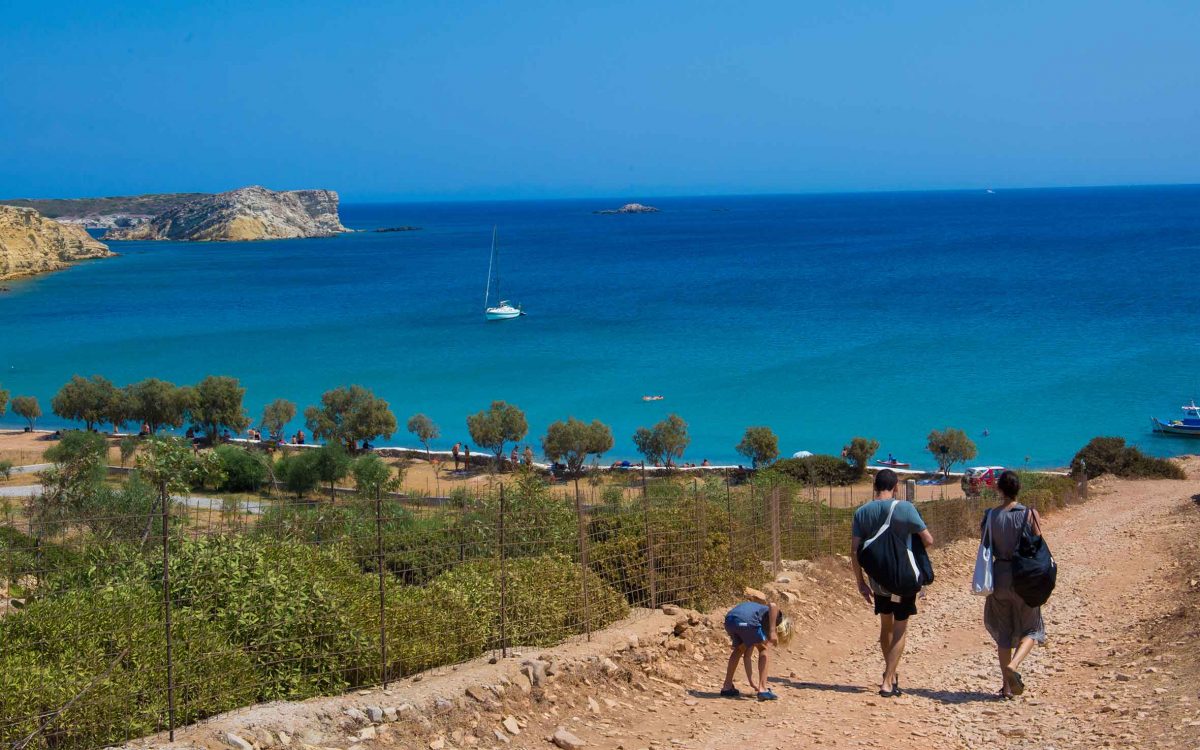Spend a week in a place with no cars
Surprisingly, a place without cars is not silent, but rather full of sounds. You’ll notice it on some Greek islands in the morning, as you swing open your window shutters to a world full of birdsong, buzzing insects, purring boat engines down in the port, and the clinking and pouring sounds of breakfast. Of course, the lack of traffic noise is just an added bonus to spending a vacation somewhere where there are no cars. There are plenty of other reasons too, and supporting a destination with a smaller carbon footprint is the main one.
On the island of Hydra, no cars or motorbikes are allowed. The locals still depend on donkeys to carry some things, and you’ll need to use your own legs to get around. You’ll feel lucky for it, as it’s a beautiful island to discover on foot. Nearby Spetses is another island that has minimized its dependence on cars, forbidding them within the main town and on the stretch between the old and the new port. Only motorbikes are allowed, as well as a few taxis that can transfer you to more remote locations. Your best option however, when you’re too tired to walk or cycle, is a horse-drawn carriage.
Other islands may allow cars, but you don’t really need them. On Greece’s smallest inhabited islands (like these and these) everything is reachable on foot.

© Shutterstock

© Dimitris Vlaikos
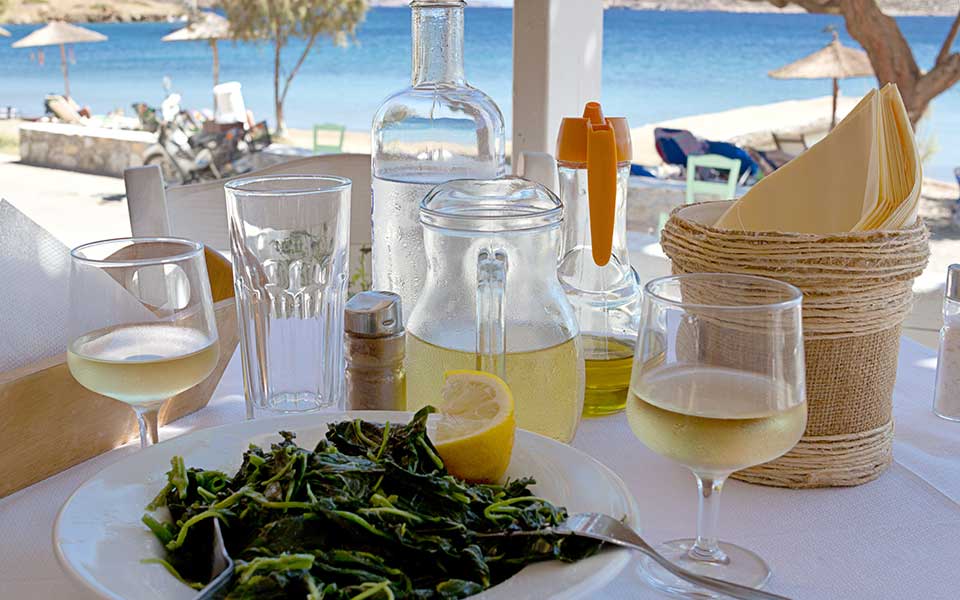
© Shutterstock
Eat green – effortlessly!
While some Greeks will still raise their eyebrows at the idea of a vegan lifestyle, you’ll find that vegan food is, surprisingly, readily available everywhere. Why this inconsistency? While choosing not to eat animal products is a relatively new concept in the country (even though during the Lenten periods, food is quite similar to vegan fare), delicious plant-based dishes have long had a place on the table out of necessity. During trying times, Greeks have always been able to depend on the country’s fertile soil and mild climate to ensure exceptionally good produce which, along with some olive oil, is really all you need.
Excellent vegetables make simple chopped salads good enough to enjoy on their own (in fact, many tourists happily enjoy the famous “Greek salad,” or “horiatiki,” for lunch, and it’s almost as good without – or with a soy version of – the feta cheese). Meanwhile, a whole category of plant-based food known as lathera (literally “oily”) might as well be listed on the menus as “accidentally vegan.” These vegetable dishes are cooked in large amounts of olive oil, and are as filling as they are delicious. Among the most famous of them are fasolakia (green beans); briam (a local ratatouille variant); gemista (vegetables stuffed with rice); arakas (pea stew); imam bayildi (stuffed eggplant); and spanakorizo (spinach rice).
Other dishes with vegetables and pulses include Greece’s national dish, fasolada (bean soup); dolmadakia gialantzi (stuffed vine leaves); horta (boiled wild greens); gigantes (gigantes beans in tomato sauce); potato-, zucchini-, and eggplant fries; dips such as fava (yellow split pea dip) and melitzanosalata (eggplant dip); pies stuffed with various greens such as spanakopita (spinach pie) and marathopita (fennel pie); and fried patties, or fritters, such as kolokithokeftedes (zucchini fritters) and domatokeftedes (tomato fritters).
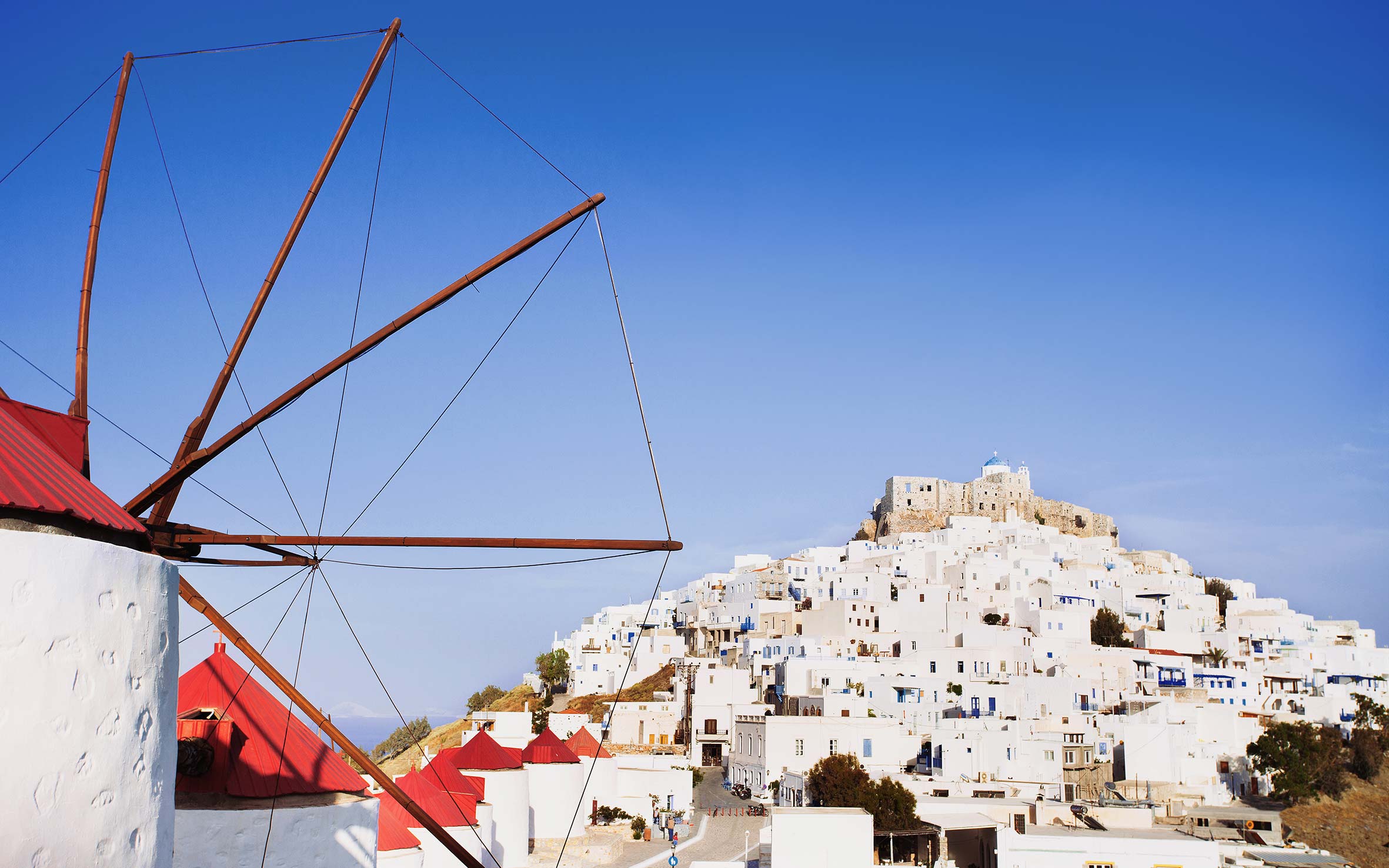
© Shutterstock
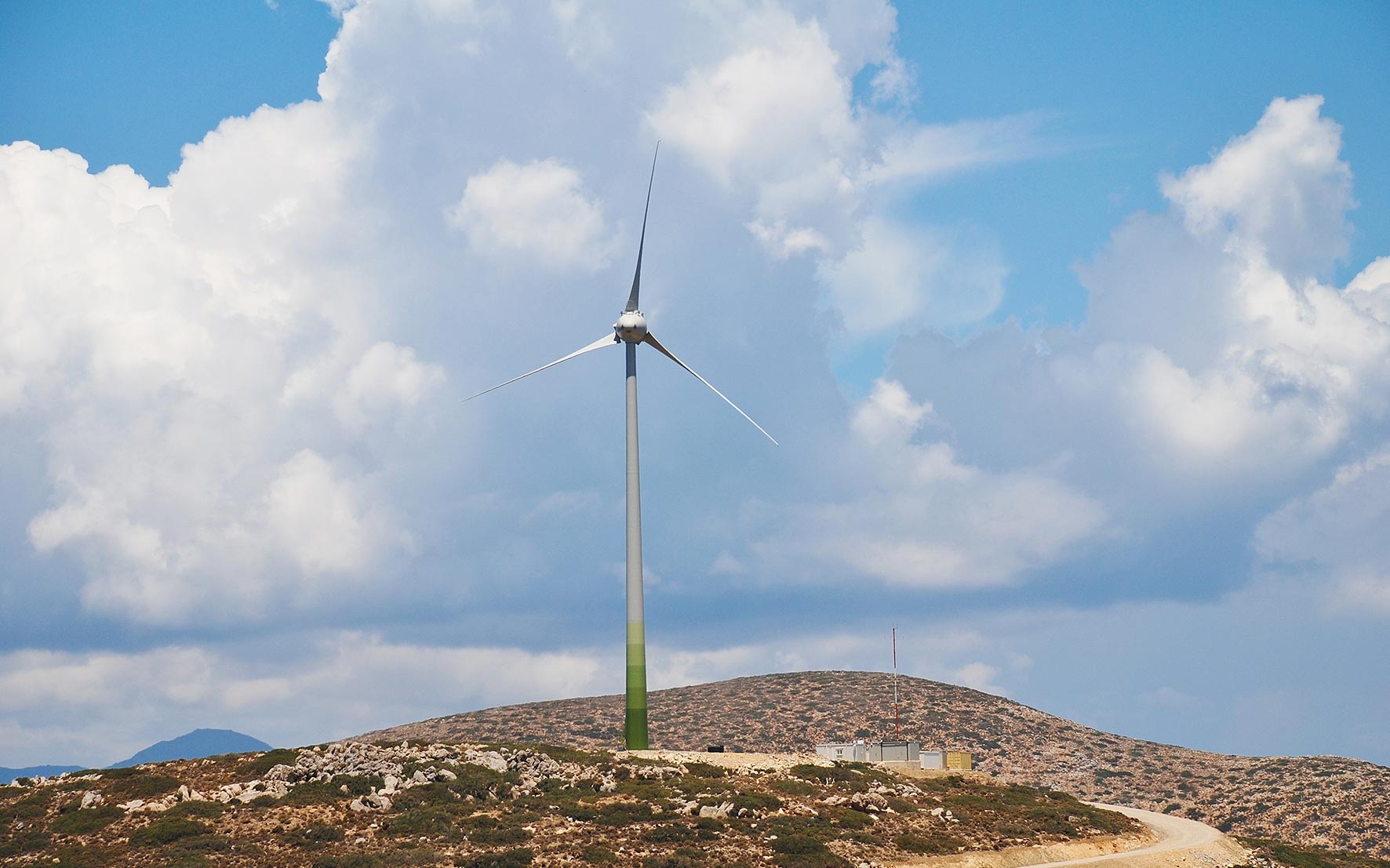
© Shutterstock
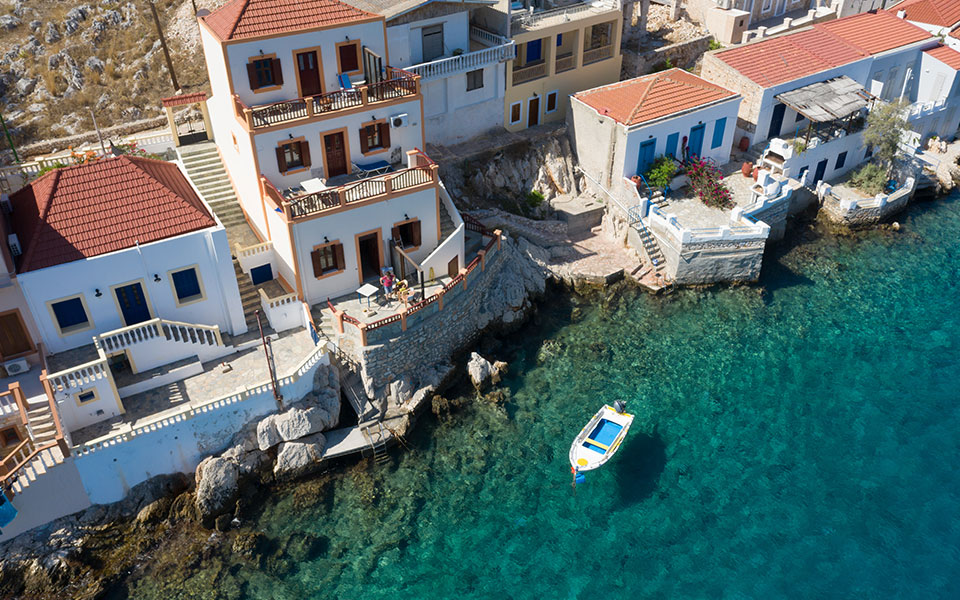
© Shutterstock
Visit the islands investing in sustainability
Who knew supporting something good could be as simple as choosing the right island for your vacation? Many destinations in Greece are actively working towards becoming more sustainable through various projects and initiatives, and some – mainly small, lesser-known islands in the Dodecanese – have come far. Assuming a new environment-friendly identity, these islands are slowly gaining fame and attracting more tourism as a well-deserved prize for their efforts.
The most acclaimed example is the little Dodecanese island of Tilos, which famously produces most of its own electricity in a hybrid wind and solar power station since 2019, and announced last year that they now also recycle as much as 80% of all the trash they produce. The municipality uses electric cars and powers things like ramps for the disabled with solar power panels. Similarly, on neighboring Halki, a series of development projects aiming to reduce environmental pollution and introduce renewable energy sources have been initiated as part of the government’s GR-Eco Island plan, while just a bit further north, Lipsi has made a commitment to cut down their single-use plastics that’s a lot more significant than just discouraging plastic straws; they installed water desalination kiosks along the port and made water free for half of the month, so that plastic bottles are no longer necessary. Meanwhile, the slightly larger island of Astypalea has focused on limiting its carbon emissions by encouraging a switch to electric cars – an initiative proving popular not only with locals, but with visitors as well, as the mayor of the island commented last year that electric vehicles have become more popular to rent than conventional vehicles, and that the island’s eco-information point is constantly busy.
The island of Alonissos in the Sporades, meanwhile, with its Natural Marine Park home to the Mediterranean monk seal (Monachus monachus), was named one of the world’s best eco-tourism destinations last year by the Association of British Travel Agents.

© Nicholas Mastoras
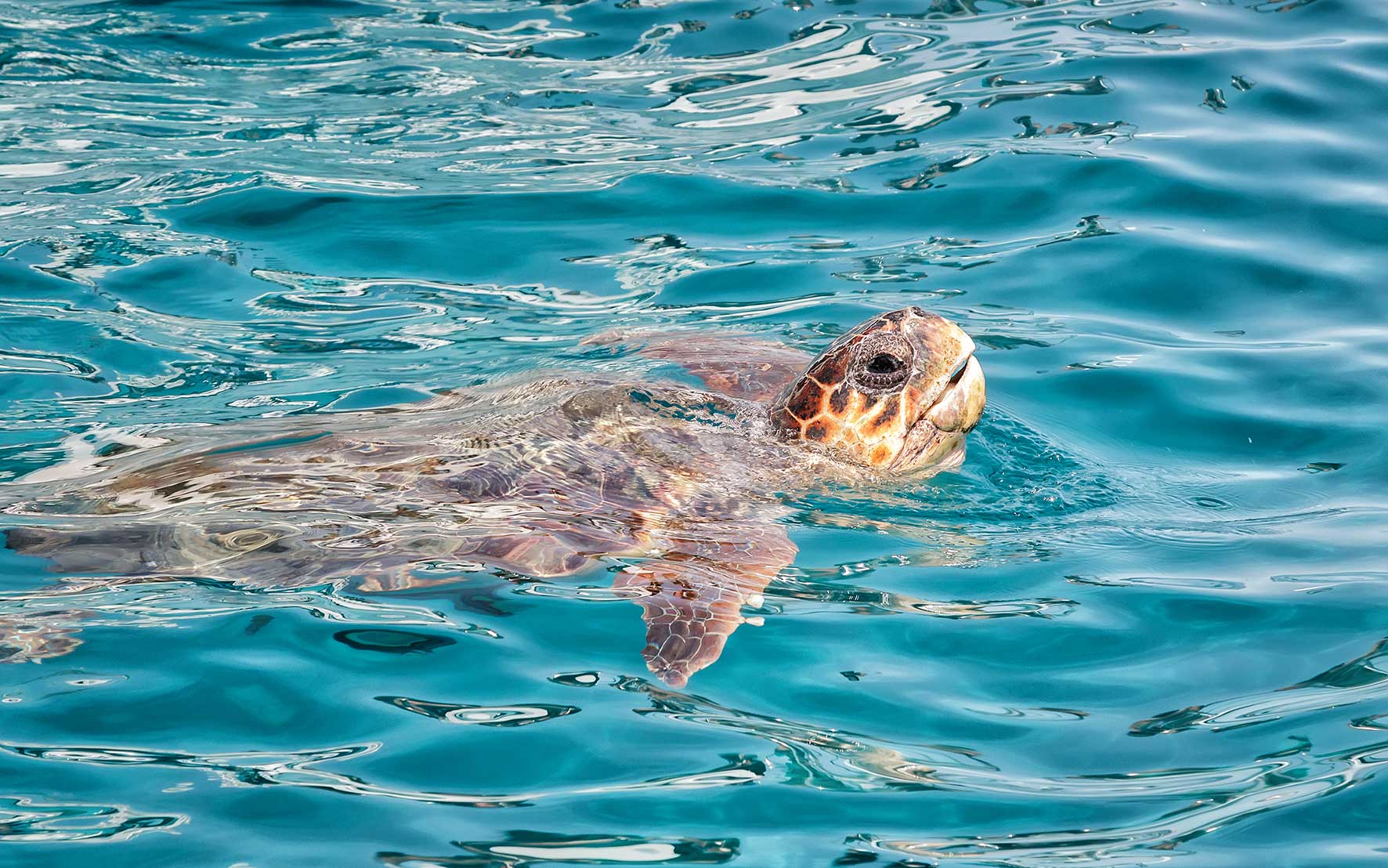
© Shutterstock
Discover Natura 2000 protected sites
In few places in Europe can you hike (and dive) in such varied, unspoiled landscapes, knowing that they’re protected either by national law, by UNESCO’s Global Geoparks network, and/or by the European Natura 2000 network. Part of the aim of the latter is to provide guidelines for tourism activities within the protected areas, which include as many as 446 sites in Greece, covering nearly a third of the country’s land and a fifth of its marine surface area. According to WWF Greece, “Greece, despite its small size, is one of the richest countries in biodiversity in the European Union and globally,” and the Natura 2000 sites offer protection for a total of 89 types of habitat, 299 plant and animal species and 177 bird species. The animals include rare marine species, such as the Mediterranean monk seal, the loggerhead sea turtle (Caretta caretta), whales, dolphins, and sea birds.
To find guidelines for visiting a specific Natura 2000 network site, it is best to contact a local tour operator or professionals involved in the protection of the area, as different rules may apply depending on the habitats you’re visiting.

